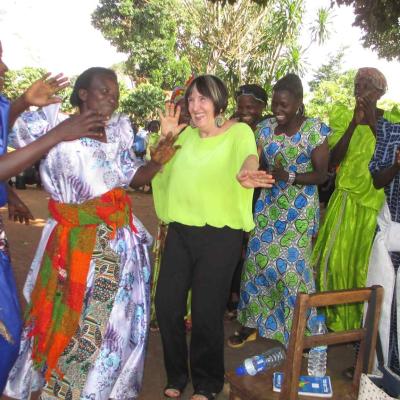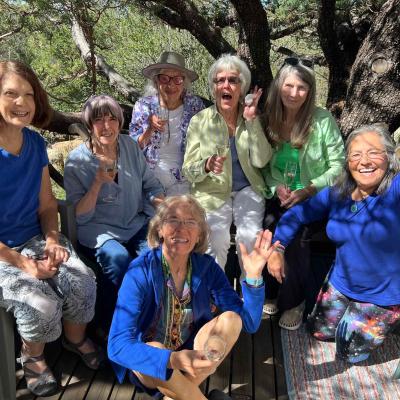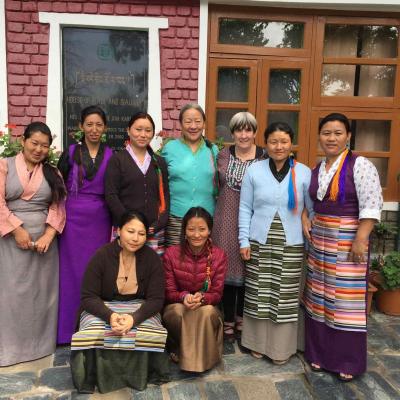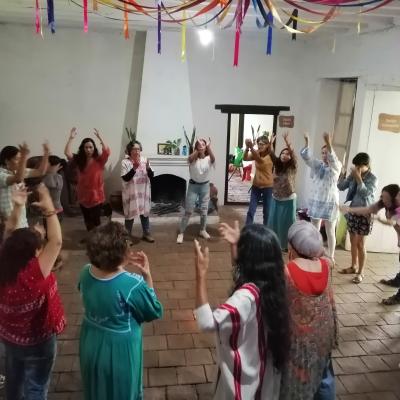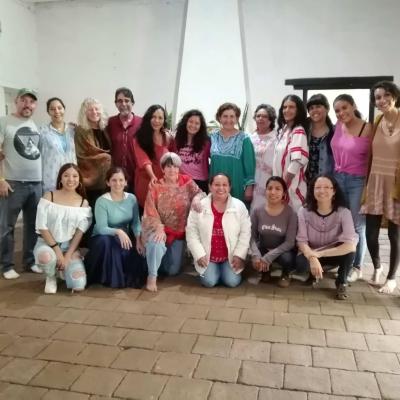We live in a world filled with beauty and happiness, as well as tragedy and pain. The latter is becoming even more apparent on a global level as evidenced by daily news, economic, environmental crises as well as increasing wars. Awareness of (as well as experiencing) these events can exacerbate stress and initiate traumatic responses. We simply cannot avoid feeling the levels of traumatic change taking place throughout the planet that is impacting all species. Even if we are able to enjoy our daily lives (and many of us do), on subtle levels we are aware of increasing destructive forces. We are connected on all levels no matter how much we try to avoid this reality!
How do we cope with trauma and pain? I know I often feel it when I see images of placed being bombed and see the thousands of refugees looking for safe havens. Sticking one’s head in the sand (or the clouds) is isolating and doesn’t resolve anything. The methods for healing and containing can be found within the deeper levels of our religious teachings. They lead to the knowledge of own soul—something we generally ignore—unless challenged for something beyond our ordinary lives.
The great psychiatrist Carl G. Jung wrote how “People will do anything, no matter how absurd, in order to avoid facing their own souls. One does not become enlightened by imagining figures of light, but by making the darkness conscious “(Jung, 1968, p. 99). Think of all the things that people do to avoid this intimacy with the soul! Most people do not want to spend the time and effort to face ourselves in order to make “the darkness conscious”!
There are so many ways to dissociate from authentic feeling, inner knowing, and even desired spiritual development. Social media is one way of “checking out” for many people. They end up living in a superficial reality. Some prefer to ignore the reality of what is taking place. I have been told by many new age friends that they “prefer to give their energy to the good focusing only on spiritual, feel-good activities.” Others runs to the doctor for antidepressants and/or anti-anxiety medications regardless of the increasing numbers of side effects, often including “possible death” in the listing.
In the Introduction to the revised edition of Modern Psychology and Ancient Wisdom, I wrote the following about a popular (often advertised) drug, Abilify.
The biological-medical model of psychiatric illness encourages its practitioners to blame the body for serious psychological difficulties and to control this condition through the use of psychotropic medications. Television ads, especially in the United States, include numerous ads for psychiatric drugs, especially the ad for Abilify. This drug is to be included in one’s medical regimen when the current medication for depression, mood swings, etc, is not working. The current TV ad is also listed on the abilify.com website, and runs approximately one minute and 16 seconds. The first 24 seconds discuss symptoms and gives reasons for taking the medication. This is followed by an 80 second description of various, side effects, some that can lead to death. During this 80 second portion, there is a smiling doctor writing out a prescription. He smiles as he opens the door for her (the patient) to leave. She is then seen at home with family as she watches children play a soccer game. The visual message (which is pleasant) does not match the audio message (which is seriously unpleasant) at all. How does the brain assimilate this? Or is it the simple 12 second ending that goes directly from the long list of side effects to the words “since adding Abilify I feel better…” that has the lasting effect?
People are not using their innate capacities for discernment. The darkness that accompanies uncomfortable feelings, disturbing thoughts and intimations of entering new life stages is avoided at all costs. The developmental journey of learning how to deal with problems and difficult emotional states is halted; signs promising psycho-spiritual growth are ignored; and a weaker state is enhanced. At a time when anxiety and trauma are increasing at an alarming rate, it is important to have a healthier belief system that empowers rather than defeats. It is not compassionate to medicate people in ways that prevent human development. (pp. xxvii)
The deeper side of our religious traditions provides some incredible healing processes. In particular, I would like to emphasize the power of one’s own breath. It does NOT have the side effects listed on those little papers accompanying prescription drugs. The opening paragraph to The Revelation of the Breath (2009), begins with the following words:
Breath is the very essence of life. Our entrance into life occurs with that first breath, and it is with a final breath that we depart. The breath we breathe contains the attributes of the Divine. Awareness of breath determines the level of our connection to the deeper meaning of life itself. It is an expression of our humanity, carrying our sighs, moans, subtle praising and compassion. Breath changes with emotion, with threat, arousal, with activity, and so on. When it is held, it can reflect our anger and our fear. The depth of breath, the ease of breath, the rhythm of breath, all change automatically with our condition and mood. A sudden shock brings a gasp or a momentary cessation of breathing. A sneeze is an eruption of breath that makes one so suddenly vulnerable that we wish the sneezer good health and blessings to ward off the incursion of malicious spirits. Recognition of the breath can also transform our lives. Its release can bring us greater emotional, mental and spiritual freedom. Its study can lead us to the source of life’s secrets; and the more intention and focus we bring to breath, the more deeply we connect with our original nature.
Yet, very little attention is given to its healing power—the power that can lead to the knowing of our authentic selves.
When we dedicate ourselves to conscious breath as a healing and deepening process, we open ourselves to ongoing discoveries. It can also guide us into and through the dark night in which the denied shadow qualities reside. It can “make the darkness conscious” as Jung suggested.
This darkness can also be related to early life trauma, or even past-life ones. For example, I was introduced to the breathing practice called “Rebirthing” in 1984. I dedicated myself to one year of individual weekly suggestions and then at least one large group session per month. The first thing I learned was the fact that emotional memories were stored in the body. During my first major release the thought came to me that Freud (or his predecessors) had never said exactly where the unconscious was. I recognized it was the body!
Four years later I began to have experiences suggesting “hidden” trauma. In a dream I learned of a “murder” and that the “body was locked in a locker in the locker room.” I began having shamanic experiences as well, but as I opened to deeper experiential levels related to power, an immense fear accompanied it. Thus began decades of an unveiling process—always guiding me to remember I was something more. The trauma led to the soul.
To be continued in Blog Two.
References:
Jung, C.J. (1968). Psychology and Alchemy, The Collected Works of C.G. Jung, Volume 12. Princeton: Princeton University Press.
Mijares S.G. (Ed.) (2016). Modern Psychology and Ancient Wisdom: Psychological Healing Practices from the World’s Religious Teachings, Revised Edition. New York: Routledge Mental Health.
Mijares, S.G. (Ed.). (2009). The Revelation of the Breath: A Tribute to its Wisdom, Power and Beauty. New York: State University of New York Press.

.jpg)
